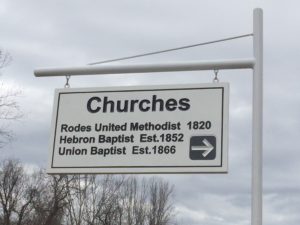CUSTOM WOOD SIGNS FOR CENTRAL VIRGINIA
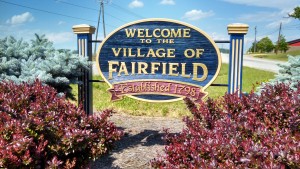
LARGE SERVICE AREA
Based in Staunton, VA, Augusta Sign Company serves customers within a hundred miles of the shop with custom wood signs!
This large geographic service area includes the following areas:
Staunton, Waynesboro, Harrisonburg, Covington, Clifton Forge, Lexington, Lynchburg, Roanoke, Salem, Charlottesville, Richmond, Elkton, Grottoes, Verona, Weyers Cave, Stuarts Draft, Crimora, Amherst, Lovingston, Nellysford, Wintergreen, 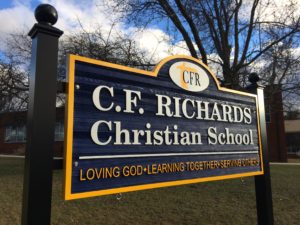 Afton, Crozet, Massanutten, Middlebrook, Goshen, Clifton Forge, Mount Sydney, Mount Crawford, Dayton, Broadway, Timberville, New Market, Stanley, Luray, Front Royal, Woodstock, Mount Jackson, Edinburg, Strasburg, Stephens City, Kernstown, Winchester, Fairfield, Natural Bridge, Fincastle, Troutville, Buchanan, Vinton, Rocky Mount, Ferrum, to mention a few!
Afton, Crozet, Massanutten, Middlebrook, Goshen, Clifton Forge, Mount Sydney, Mount Crawford, Dayton, Broadway, Timberville, New Market, Stanley, Luray, Front Royal, Woodstock, Mount Jackson, Edinburg, Strasburg, Stephens City, Kernstown, Winchester, Fairfield, Natural Bridge, Fincastle, Troutville, Buchanan, Vinton, Rocky Mount, Ferrum, to mention a few!
TYPICAL CUSTOMER BASE
Customers we serve generally fall into these categories:
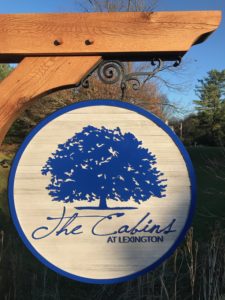 Churches, Medical Offices including Dental, Optical, and Veterinary, Professional Offices, Parks and Recreation, Public Works, Downtown Retailers, Specialty Shops, Hospitality, Private Farms and Residences, Industrial, Specialty Services, Schools, Libraries, and Museums.
Churches, Medical Offices including Dental, Optical, and Veterinary, Professional Offices, Parks and Recreation, Public Works, Downtown Retailers, Specialty Shops, Hospitality, Private Farms and Residences, Industrial, Specialty Services, Schools, Libraries, and Museums.
TYPICAL SIGN TYPES
The typical types of custom wood signs we produce include:
Post and panel type signs where the wood sign is one or two-sided, mounted between two poles, or hung from a single post. Posts can be supplied by the customer, or we can fabricate or provide posts made of wood or aluminum. We can also provide standard iron scroll brackets for single-pole or wall mount signs.
Entry monument signage where the customer usually has a masonry contractor construct a brick or stone base designed for a custom wood sign. Augusta Sign Company is a licensed contractor and can subcontract sign base construction, or build certain types of stucco or custom wood sign monuments in-house.
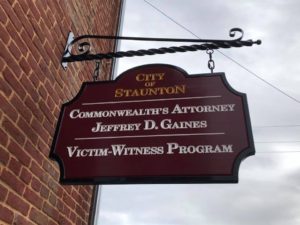
Contact:
Mark Hackley
540-943-9818
OTHER SIGN SERVICES
In addition to custom wood signs, Augusta Sign Company can also help customers with Directional Signage and Wayfinding, 3-Dimensional Letters, Hand-Painted Specialty Signs, Gold Leaf, Vehicle and Window Graphics, Banners, Bronze Plaques, Industrial Safety and Parking Lot Signage.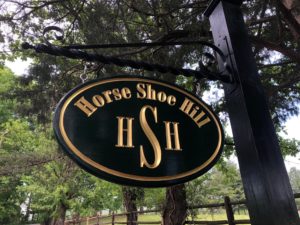
Augusta Sign Company began as Tree Street Signs in 1990, changed its name in 2000 and began operating full-time as Augusta Sign Company in 2015. The shop is located in Augusta County, Virginia.
HOURS OF OPERATION
Mon-Fri 9:00AM-5:00PM, Closed Weekends and Holidays
 area churches of all denominations and many times I will donate my time to install them if they are reasonably close to my shop in Staunton, Virginia. I make simple banners in my shop using pre-cut and hemmed rolled one-sided banner stock material, a white 13 oz. material that has a glossy sheen. I design the banner layouts on my computer design software and use a vinyl-cutting machine to cut the graphics that I later apply to the blank, white banner. The banners come with pre-spaced grommets that allow for hanging on poles with hooks or attaching to walls and other flat surfaces with screws and fender washers. For more detailed banners or ones with more than one or two colors, I send them off for digital printing. In my small shop, banners may take longer
area churches of all denominations and many times I will donate my time to install them if they are reasonably close to my shop in Staunton, Virginia. I make simple banners in my shop using pre-cut and hemmed rolled one-sided banner stock material, a white 13 oz. material that has a glossy sheen. I design the banner layouts on my computer design software and use a vinyl-cutting machine to cut the graphics that I later apply to the blank, white banner. The banners come with pre-spaced grommets that allow for hanging on poles with hooks or attaching to walls and other flat surfaces with screws and fender washers. For more detailed banners or ones with more than one or two colors, I send them off for digital printing. In my small shop, banners may take longer 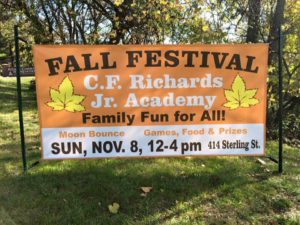 to complete than some of the other shops in my area. If people are in a big hurry, I usually suggest they contact “All Phase Graphics” in Staunton, or “Viking Forge Design” in Waynesboro. Both these shops have in-house digital printers and may produce banners faster than what I can do. If you plan ahead, it takes about 1-2 weeks to get a banner order out during normal production levels at my shop.
to complete than some of the other shops in my area. If people are in a big hurry, I usually suggest they contact “All Phase Graphics” in Staunton, or “Viking Forge Design” in Waynesboro. Both these shops have in-house digital printers and may produce banners faster than what I can do. If you plan ahead, it takes about 1-2 weeks to get a banner order out during normal production levels at my shop.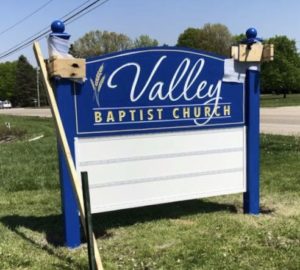 viewing distance and speed limit. Most letters are in the 3″-8″ range for the church marquees I have made, and the letters are typically black on a white background. A church situated on a high-traffic highway may be more inclined to invest in an electronic marquee which has many advantages over the manual marquee signs that I can produce in my shop. I recommend churches interested in electronic signs contact “Holiday Signs” in Chester, VA.
viewing distance and speed limit. Most letters are in the 3″-8″ range for the church marquees I have made, and the letters are typically black on a white background. A church situated on a high-traffic highway may be more inclined to invest in an electronic marquee which has many advantages over the manual marquee signs that I can produce in my shop. I recommend churches interested in electronic signs contact “Holiday Signs” in Chester, VA.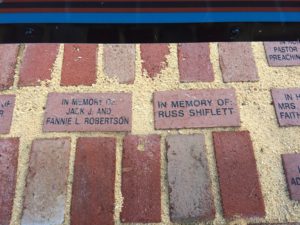 The church raised enough money to purchase a new sign and they had a friend lay the brick at its base. Money raised this way could also be used for a comprehensive marketing campaign for a church event or events.
The church raised enough money to purchase a new sign and they had a friend lay the brick at its base. Money raised this way could also be used for a comprehensive marketing campaign for a church event or events.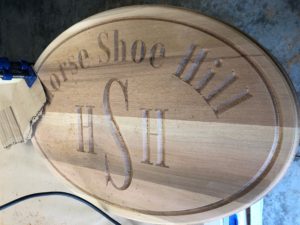 Applying Gold Leaf to Carved Signs
Applying Gold Leaf to Carved Signs presented my proposal, she elected to go for the gold! Gold leaf is an ancient art form. “The Temple of Solomon was profusely gilt,” says Homer in his early writings. Gold leaf was widely used in old Roman art, architecture, furniture, and carved lettering. Gold leaf is actual gold that is beaten down to a fine sheet and applied to surfaces with “size”, a special type of “glue” that the thin metal sheets stick to. To make the sign for the horse farm, I first ordered the cedar panel and had the letters and borders CNC-routed from my customer-approved design. Once the letters and borders were carved, I sanded them with fine-grit sandpaper to smooth out any course grain in the lettering. Once sanded, I cleaned and primed the entire two-sided sign with a quality oil-based primer that seals the wood and provides an adequate base for the finish coat, which in this case was a brush-painted Hunter Green sign enamel. It helps to tint your primer to the shade of your finish coat, so I added some black tint to make a gray primer coat. I use the 2-2-2 method in my finishing of wood signs: 2 coats primer, 2 coats background finish, and 2 coats for the graphics, which for this project meant two passes of gilding to catch any missed areas and pinholes.
presented my proposal, she elected to go for the gold! Gold leaf is an ancient art form. “The Temple of Solomon was profusely gilt,” says Homer in his early writings. Gold leaf was widely used in old Roman art, architecture, furniture, and carved lettering. Gold leaf is actual gold that is beaten down to a fine sheet and applied to surfaces with “size”, a special type of “glue” that the thin metal sheets stick to. To make the sign for the horse farm, I first ordered the cedar panel and had the letters and borders CNC-routed from my customer-approved design. Once the letters and borders were carved, I sanded them with fine-grit sandpaper to smooth out any course grain in the lettering. Once sanded, I cleaned and primed the entire two-sided sign with a quality oil-based primer that seals the wood and provides an adequate base for the finish coat, which in this case was a brush-painted Hunter Green sign enamel. It helps to tint your primer to the shade of your finish coat, so I added some black tint to make a gray primer coat. I use the 2-2-2 method in my finishing of wood signs: 2 coats primer, 2 coats background finish, and 2 coats for the graphics, which for this project meant two passes of gilding to catch any missed areas and pinholes.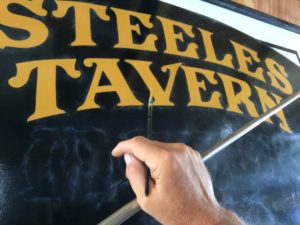 STAUNTON, VIRGINIA Mark Hackley, owner of Augusta Sign Company formerly of Waynesboro, Virginia has moved his sign shop to Augusta County, Virginia, near Staunton. So
STAUNTON, VIRGINIA Mark Hackley, owner of Augusta Sign Company formerly of Waynesboro, Virginia has moved his sign shop to Augusta County, Virginia, near Staunton. So  signage with his colleague Allen Gray around 1983. He then formed Kullman Signs with a friend, also on a part-time basis, around 1985. By 1987 Mark had formed Western Signs and Graphics and took out his first newspaper ad in the Laurel Leader. By 1988, Mark was married and he moved his business, still called Western Signs and Graphics, to Waynesboro, Virginia. He worked from home on a part time basis while working for Keeney and Company Architects of Charlottesville for about a year but before long, Mark began renting space above the former Doll Hospital on Wayne Avenue in Waynesboro later in 1988.
signage with his colleague Allen Gray around 1983. He then formed Kullman Signs with a friend, also on a part-time basis, around 1985. By 1987 Mark had formed Western Signs and Graphics and took out his first newspaper ad in the Laurel Leader. By 1988, Mark was married and he moved his business, still called Western Signs and Graphics, to Waynesboro, Virginia. He worked from home on a part time basis while working for Keeney and Company Architects of Charlottesville for about a year but before long, Mark began renting space above the former Doll Hospital on Wayne Avenue in Waynesboro later in 1988. where he remained for one full year. The business began to grow and Mark soon expanded to a larger facility in Crimora, Virginia, where he rented industrial space from Gary and Linda Scrogham of Scrogham Enterprises.
where he remained for one full year. The business began to grow and Mark soon expanded to a larger facility in Crimora, Virginia, where he rented industrial space from Gary and Linda Scrogham of Scrogham Enterprises.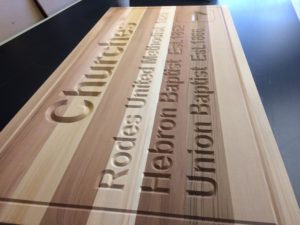 most sign buyers!
most sign buyers!